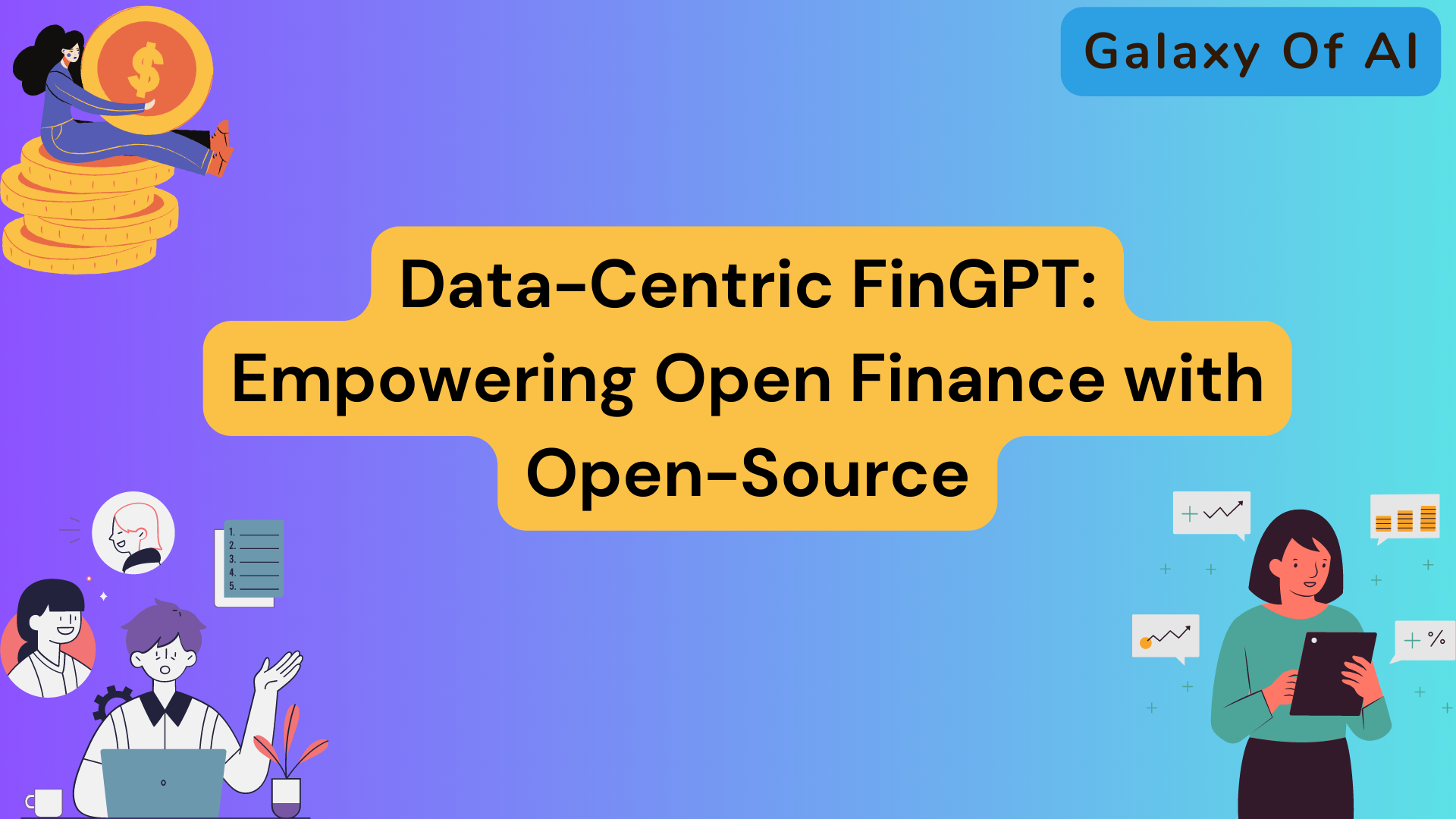Hello Learners…
Welcome to the blog…
Topic: Data-Centric FinGPT: Empowering Open Finance with Open-Source
Table Of Contents
- Introduction
- What is FinGPT?
- Why FinGPT?
- Data-Centric FinGPT: Empowering Open Finance with Open-Source
- How FinGPT Works?
- Summary
- References
Introduction
In this post, we discuss Data-Centric FinGPT: Empowering Open Finance with Open-Source.
In the rapidly evolving world of finance, data is king. The ability to gather, analyze, and leverage vast amounts of information has become a critical factor for success in the industry. Recognizing this need, a groundbreaking solution has emerged – Data-Centric FinGPT.
This open-source platform is set to revolutionize Open Finance by empowering financial institutions with the power of data. Here, we try to understand the capabilities of Data-Centric FinGPT and explore how it is reshaping the landscape of finance.
What is FinGPT?
FinGPT is a specialized version of the GPT (Generative Pre-trained Transformer) language model that is specifically trained for financial applications and data.
We know that The GPT, developed by OpenAI, is a state-of-the-art language model that uses deep learning techniques to understand and generate human-like text.
The purpose of FinGPT is to assist with various financial tasks, such as analyzing financial statements, predicting market trends, generating financial reports, answering financial queries, and providing insights for investment decisions. It can be a valuable tool for financial professionals, analysts, researchers, and anyone seeking information and guidance in the field of finance.
FinGPT operates by processing input text and generating coherent and contextually relevant responses. It uses the knowledge and patterns it learned during training to provide information, explanations, and predictions related to finance.
However, it’s important to note that it is an AI language model, and FinGPT does not possess real-time financial data, its responses are based on historical information it was trained on.
While FinGPT can be a useful tool for generating insights and assisting with financial analysis, it should not be solely relied upon for making critical financial decisions.
It’s always recommended to verfiy information from reliable sources, consult with financial experts, and consider multiple factors when making important financial choices.
Why FinGPT?
Here are some reasons why FinGPT is useful :
Financial Expertise :
- FinGPT is specifically trained on a vast amount of financial data, including news articles, company reports, economic data, and market trends. This specialized training equips the model with financial domain knowledge, making it more knowledgeable about the finance industry and its unique terminology, concepts, and dynamics.
Domain expertise :
- FinGPT is specifically trained on financial data and incorporates financial domain knowledge into its training. This allows it to understand the specific terminology, concepts, and context of the financial industry. As a result, it can provide more accurate and contextually relevant responses to financial queries and takes compared to a generic language model.
Natural language interaction :
- FinGPT’s natural language processing capabilities enable users to interact with the model in a conversational manner. It can understand questions, requests, and prompts related to finance and provide responses in a human-like manner. This makes it easier to obtain information, explanations, or opinions on financial topics.
Research and Analysis :
- Researchers and analysts can leverage FinGPT’s capabilities to conduct in-depth financial research and analysis. It can assist in exploring complex financial relationships, predicting market trends, and identifying patterns in financial data.
Financial Education :
- FinGPT can serve as an educational tool by providing explanations, definitions, and examples related to financial concepts. It can assist students, professionals, and individuals seeking to enhance their financial literacy and understanding.
Scalability and availability :
- Once trained, FinGPT can be deployed as a readily available tool that can be accessed by multiple users simultaneously. This scalability makes it feasible to support a large number of users in various financial applications, such as customer support, financial planning, or portfolio management.
Data-Centric FinGPT: Empowering Open Finance with Open-Source
How FinGPT Works?
FinGPT is a variant of the GPT (Generative Pre-trained Transformer) model that has been specifically trained on financial text data. It utilizes a similar architecture and training approach as the original GPT model but focuses on financial domain-specific tasks.
Here’s a high-level overview of how FinGPT works :
- FinGPT is pre-trained on a large corpus of financial text data, which can include financial news articles, company reports, economic data, analyst reports, and more. During pre-training, the model learns to predict the next word in a sentence based on the context of the previous words. This helps the model capture the statistical patterns and language structures present in the financial text.
- FinGPT uses a Transformer architecture, which is composed of multiple layers of self-attention and feed-forward neural networks. The self-attention mechanism allows the model to weigh the importance of different words in a sentence, enabling it to capture long-range dependencies and understand the context effectively.
- After pre-training, FinGPT is fine-tuned on specific financial tasks or datasets to make it more suitable for those tasks. Fine-tuning involves training the model on a smaller, task-specific dataset with labeled examples. For example, the model can be fine-tuned for tasks like sentiment analysis, stock price prediction, financial document summarization, or answering specific financial questions.
- Once FinGPT is trained and fine-tuned, it can be used for various financial applications. Given a prompt or a query, the model generates relevant and coherent responses based on its understanding of financial language and knowledge gained during training.
Research Paper Of FinGPT,
Summary
Discover the revolutionary solution for Open Finance – Data-Centric FinGPT. This groundbreaking open-source platform empowers the financial industry by harnessing the power of data. With Data-Centric FinGPT, financial institutions can unlock new insights, drive innovation, and make more informed decisions. Dive into this game-changing technology that is set to transform the world of finance, enabling a more open and transparent financial ecosystem. Explore how Data-Centric FinGPT revolutionizes Open Finance and opens up endless possibilities for the industry.
More open source models,
